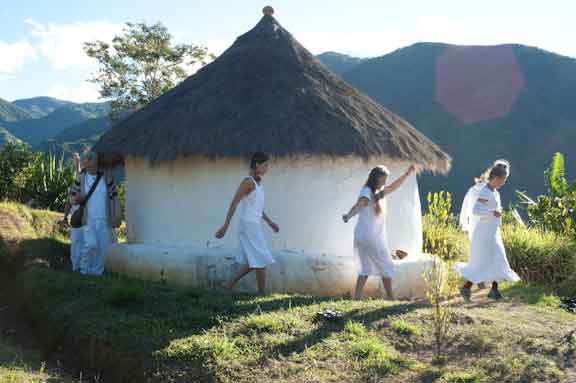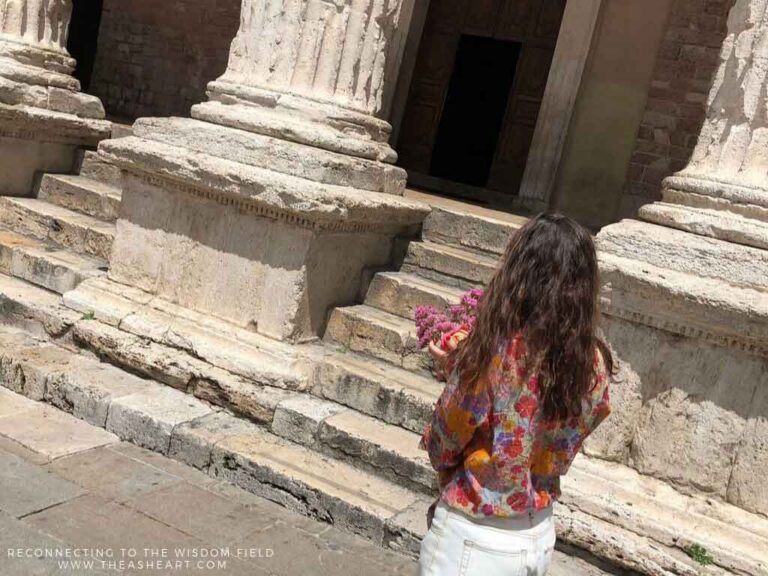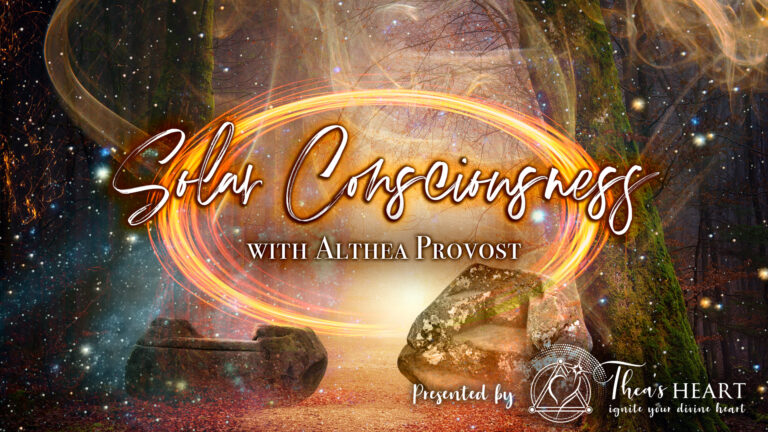The Oracles of Antiquity
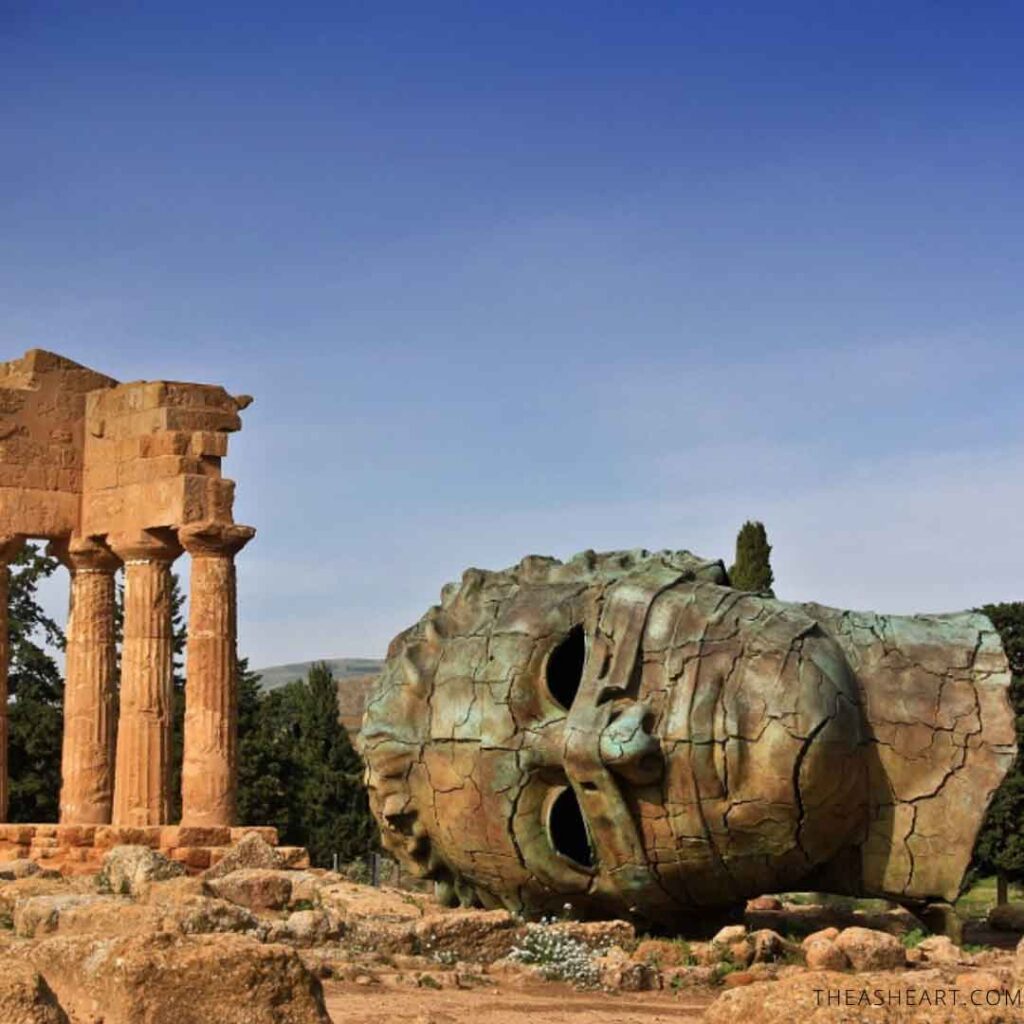
My interest in clairvoyants from antiquity developed from psychic experiences at sacred sites. Each unique experience opened a new door to the mystery. And often, an unplanned visit to bookstores in an attempt to understand the Neolithic landscape. My suitcase filled with expensive old dusty books and my wallet even lighter from airline baggage overages. From temple development and construction, archeoastronomy and archaeoacoustics, lay lines and earth magnetics, to antiquarian books, the desire to learn became a part of the journey. I began to wonder who these ancient oracles were and how they functioned in their roles. This blog briefly shares some of my experiences and my effort to understand the intuitive nature of the Oracles at Delphi.
Historical Greek Narrative
Supposedly, the oracle at Delphi, Pythia by title, inhaled a vapor called the pneuma from her darken subterranean office underneath the Temple of Apollo. In an anesthetic state, from mild to manic, Pythia produced intelligent, prophetic verses. Was Pythia a huffer? Researchers Spiller, Hale, and De Boer suggest a “gaseous vent theory” where Pythia mounts her seat called a tripod to breathe in naturally occurring ethylene vapors to perform her godly verse.1 The priestesses of antiquity were renowned for their ability to communicate for the God’s. At Delphi, Pythia spoke for the goddess Gaia, the Great Mother Earth likely in step with the ancient Neolithic priestesses. As time passed from matriarchal to patriarchal, the site represented the god, Apollo. Pythia’s remained but their primary role was challenged and submerged as temple culture was attacked by the Roman church. Prior to the fall, Plutarch, a male priest to Apollo suggested the vapors were simply a trigger and despite his proximity to the priestesses, their selection process and inner sanctum were unknown and unrecorded. In other words, a closely guarded inner sanctum for female oracles only. Plutarch suggests that the priestesses from Delphi could be young or old, rich or poor, intelligent or unable to write their name,1 suggesting that it wasn’t the body, external wealth, or mental agility, it was something else. A selected class of women from Delphi who was able to intelligently communicate in verse or prose for the gods while in a dream-like trance.
Delphi served as a shrine for Gaia in the 7th century BC and gave its final prophecy around 390-393 CE when the Roman emperor Theodosius issued decrees banning pagan sanctuaries.2-3 Before that, Pythia’s kept the eternal temple fires blazing and served as an oracle on Apollo’s Day, the 7th day after each new moon in spring, summer, and fall. Nine times a year Pythia provided her infamous counsel communicating in a verbal riddle in which the seeker must solve. Prophetic wisdom that was legendary and sought after by notable rulers and laypeople alike. Did Pythia’s have access to infamous vapors on cue? Were ancient Greeks able to regulate the vaporous flow allowing her to receive questions from the gallery, prophesize on command, and perform a long workday without proper ventilation and windows? How did she see? Light a match with ethyne fuming and she’s toast. Are Pythia’s incapable of intuitive insight or inherent wisdom? In the depiction of King Aegeus seeking her counsel in 440-430 BC, Pythia is shown elevated on her tripod, holding the kylix or bowl in one hand and laurel leaf in another. Is she scrying? Darkness triggers the increased production of melatonin and in a relaxed state, was Pythia’s pineal gland activated? Did she receive third eye visions? If Pythias could achieve trance-like and mediumship abilities, did this select group of women possess other psychic abilities? Did Greek temple sites, like the Oracle at Dedona, also contain a gaseous on-off value that allowed these trance-inducing women to speak for the Mother Goddess? Did the priests and priestess who interpreted the signs of nature, such as the sound of the oak leaves in the sacred oak forest at Dedona receive their skill from an external source as well? Are we ready to close our history book on a legacy of female prophesy which spanned centuries and have yet to be truly understood? Do we lack the intuitive experiences and knowledge that ancient oracles possibly possessed and had trained for?
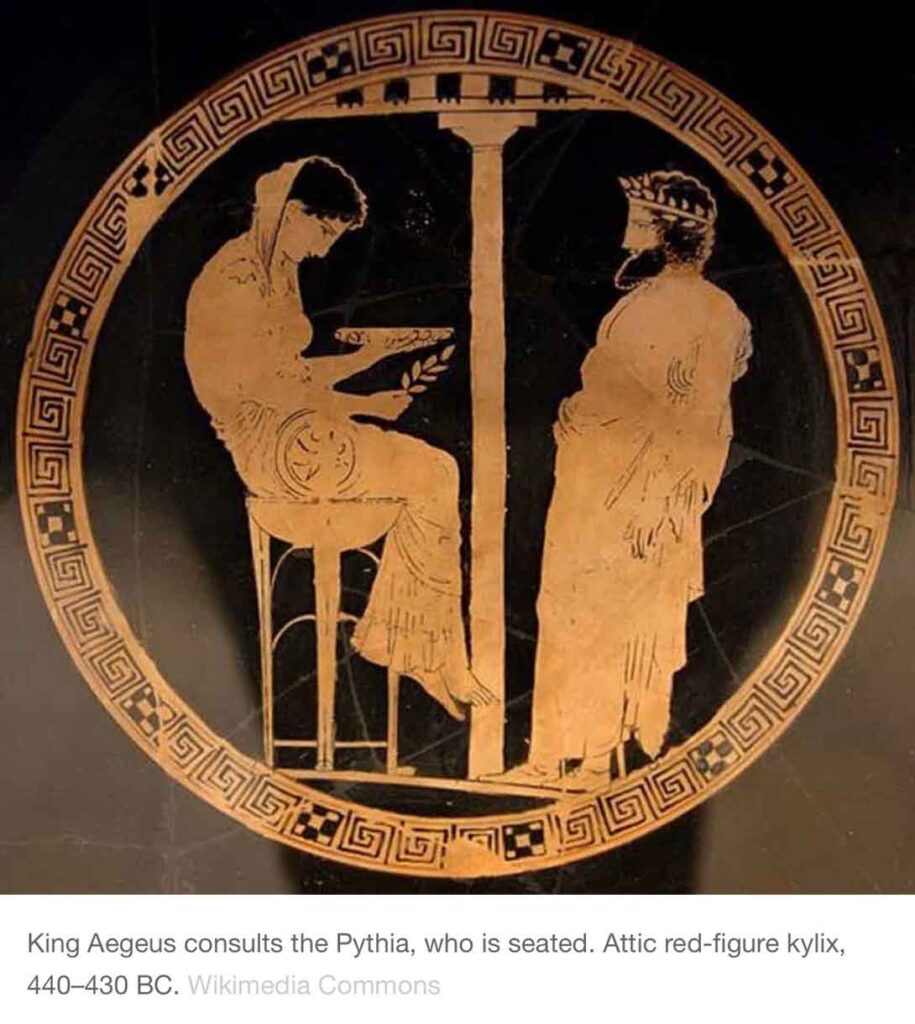
“The god-goddess is you without cultural constraints or conditions, it is where you meet yourself in the rarest form, where life and love dwell.” – Althea Provost
Reflections from the Sacred Path
At Malta’s Ħal Saflieni hypogeum in Paola, my third eye began to turn on when the subterranean darkness was met with sound. How did our ancient priestesses navigate the narrow three-story subterranean passageways to deposit 7,000 human remains 10 meters down? The modern narrative states fire torches were used as a light source, but I did not see evidence of black soot on the walls and ceiling during my allotted visit. Evidence one would expect to see from use spanning around 4,000 B.C. to 2500 B.C.4 Some of the sanctuary walls were covered in red ochre decoration. David H. Trump, a British archeologist who reviewed the site, states that the lower floor was decorated in red ochre as well as white and black chequers, including an image that was once a bull.5 Where is the archeological record describing walls and ceiling scorched from fire and notably soot? As I have suggested earlier, did the ancient Neolithic priestesses, and oracles of ancient Greece also possess this skill?
At Chichen Itza in Mexico, as I stepped onto the processional walkway leading to the Temple of Kukulcan, my third eye produced a beam of light from which I could see with an enhanced vision the landscape and others in a new light. Those who had the gift of inner sight also had a light beaming from their Anja centers. Time spent at Chichen Itza led to recalled memories from a life where I experienced a group awakening into higher states of interconnection. Where one remembers another as a brother or sister, not separate and adversarial. I was not subjected to vaporous fumes nor utilizing external substances to produce an altered state rather these sites had a powerful catalytic effect on my beingness. During my childhood, I had extensive inner visions including prophetic vision. This continued intermittently throughout my teen years and with the last major prophetic vision during the Bush-Gore presidential election in 2000. On election day when the votes were “too close to call”, I saw a fast-moving vision that enveloped my senses showing George W. Bush would become president, we would go to war, the housing market would collapse, and more.
In my case, prophetic vision, night vision, and psychic skills appear to be an inherent gift associated with my natural state. I believe our natural state is one of intuitive connectivity, present at birth and through early childhood when our autonomic nervous systems are often more aligned and supportive to subtle energy. If supported, intuition could be developed, enhanced, and explored. Our ancient ancestors built megalithic sites on specific lay lines, oftentimes in remote and difficult terrain that included fault lines. Through landscape and structure, their engineering skills combined with knowledge of astronomy created a mirror image of heaven on earth. I believe our ancient ancestors provided visual clues on how we can connect heaven and earth within, embodying our unique intuitive skills. Psychic skills when utilized with a balanced state of being, becomes our inner GPS, providing insight that is meant to educate, reveal, and teach us about the limitlessness of our human spirit.
References:
1 Spiller, Henry & Hale, John & Boer, Jelle. (2002). The Delphic Oracle: A Multidisciplinary Defense of the Gaseous Vent Theory. Journal of toxicology. Clinical toxicology. 40. 189-96. 10.1081/CLT-120004410.
2 Jones, Gabriel. “Pythia.” Ancient History Encyclopedia. N.p., 2020. Web. 6 Mar. 2020.”Theodosius I.” En.wikipedia.org. Web. 1 Mar. 2020.
3 “Delphi.” En.wikipedia.org. N.p., 2020. Web. 1 Mar. 2020.
4 Centre, UNESCO. “Ħal Saflieni Hypogeum.” Whc.unesco.org. N.p., 2020. Web. 5 Mar. 2020.
5 Trump, David H. Malta. London: Faber and Faber, 1972. Print.
©2020 Thea’s Heart, LLC™ – All Rights Reserved

